Korean Academy of Cosmetic Surgery (KACS) facelift workshop ソウル,韓国 2014/09/20-21
facelift workshop Seoul, Korea 2014/09/20-21
Lecture:Close facelift with spring lift suture
Live surgery:Spring lift
KACS 2014
Facelift workshop
Close facelift with spring thread
The mechanism of cog thread lift is to anchor the subcutaneous soft tissue with cogs and lift the tissue in a direction of traction.
Many new products have been manufactured to overcome the weakness of cog structure and anchoring power.
However, it is still limited in the maintenance of lifting.
Because the facial soft tissue is mobile in facial animation or mastification.
When opening the mouth widely or stretching the check skin downward, the dimension of skin surface increase and anchorage of the cogs will be lost.
If the slipping of anchorage doses not occur when the skin is stretched, unnatural dimple will appear or pain will be cuased.

Spring Thread™ is the elastic suspension thread with cogs made of silicone rubber.
Each cog is mechanically strong and large enough to provide secure anchorage of subcutaneous fat tissue.
The elasticity of the thread can prevent the loss of anchorage even in the facial skin stretched.
Procedure
Spring thread has cogs arranged in bi-direction manner; I cut a thread in the midpoint to produce from one to two treads with unidirectional cogs.
As for other cog thread lifts, I make a short skin incision ranging from 2 to 3 cm in the temporal area for anchoring the threads to the deep temporal fascia.
Through the incision, I expose the deep temporal fascia.
The subcutaneous dissection elevates the skin of the upper lateral cheek off the deep tissue up to the area just below the zygomatic arch.
I introduce the threads in the subcutaneous pocket and insert them in the subcutaneous soft tissue ( fat layer) using a special spatula needle pin provided by 1st surgiconcept company.
A tip of needl pin is rounded, not sharp as designed to avoid the penetration of firm fascial layer.
It is imperative to place a sufficient amount of threads in order to achieve a good suspension of tissue.
12 threads or even more are used for one side of cheek.
The distal end of thread, which is smooth in surface with no cog, is penetrated at the skin along the lower margin of cheek sagging ( jowl deformity ).
The thread end is pulled out until the most distal cog arrives at 1cm deep to the skin surface.
The threads in the temporal region are placed in a neutral tension.
They are then pulled superiorly by 1 cm and fixed to the temporal fascia with nylon suture.
The distal and proximal ends of thread are trimmed and temporal skin wound is closed.
From my clinical experiences with various cog threads I have found the spring thread can suspend the facial soft tissue with minimal chance of anchor breaking.
I believe traction of threads with full strength in the temporal area is not necessary but can be harmful; excessive pull can not only cause an unnatural appearance but also readily lead to anchor loss.
Therefore I suspend the lower cheek tissue in the superior direction by 1 cm.
Spring thread lift can be used with open facelift with minimal dissection in case of redundant skin excess.
Face-lift slide commentary
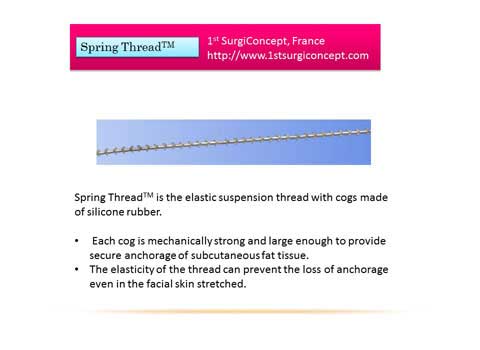
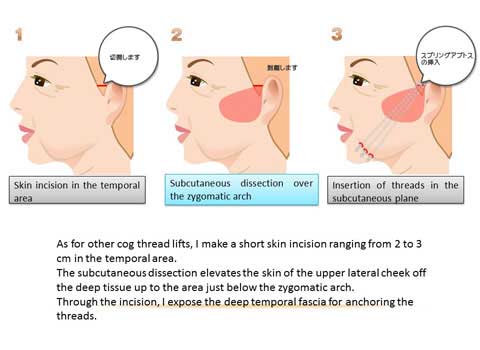
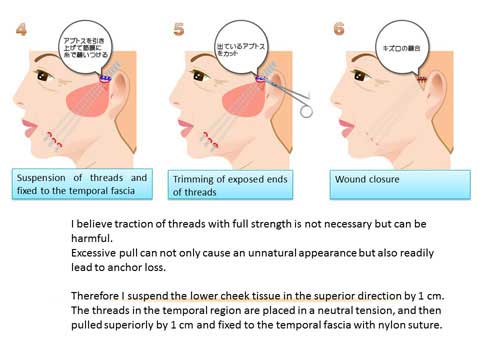
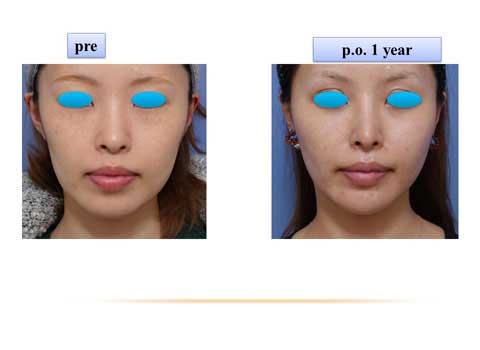
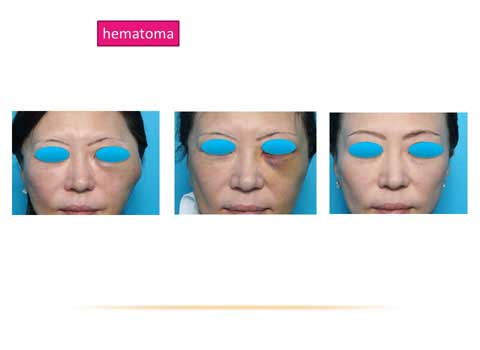
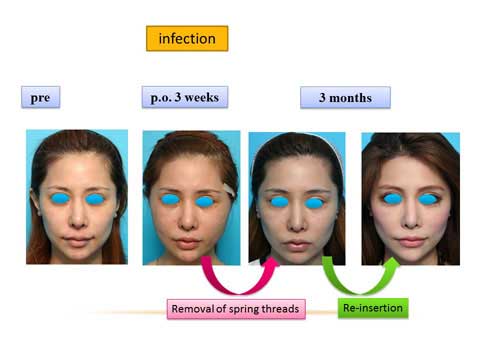
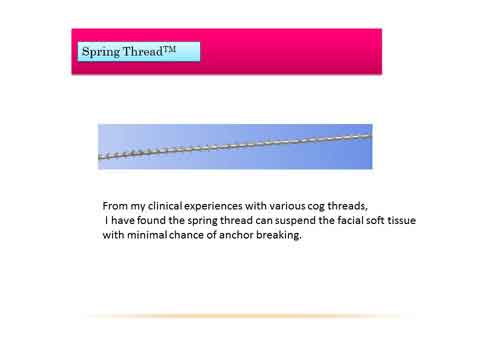
Shield
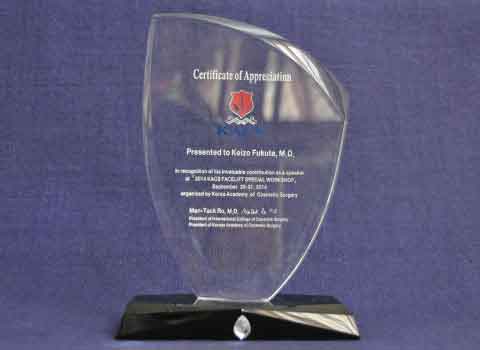
Shield
2014-Korean Academy of Cosmetic Surgery
